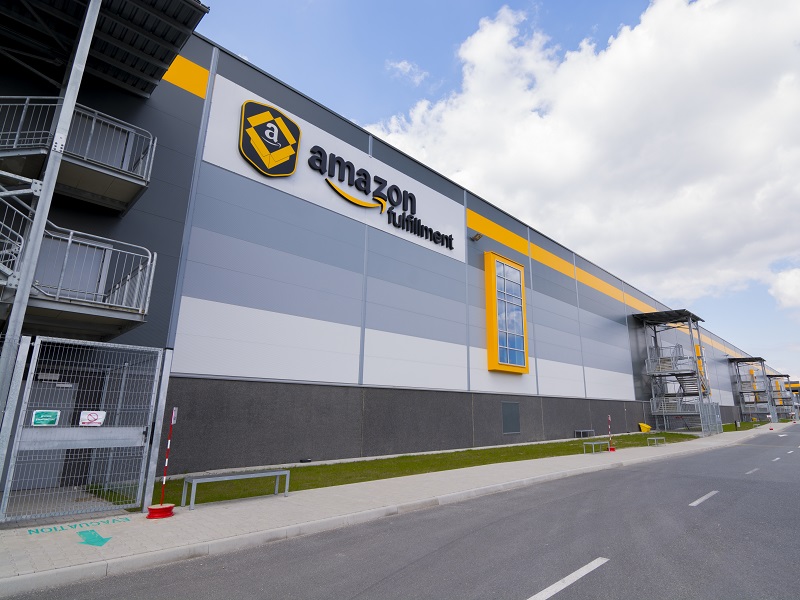
Amazon.com Inc. is expanding its education benefits to cover college tuition expenses for frontline workers in the U.S.
The benefit is available to U.S. employees after three months with the company, according to a press release, which noted the program also assists employees obtaining high school diplomas as well as certificates for general education development and English as a second language.
Read: How Provincial Aerospace promotes employee education
In addition, the company is launching three tuition-free upskilling programs in areas such as data centre maintenance and technology, information technology, user experience and research design.
Meanwhile in Canada, Amazon is increasing pay for its frontline workers as the company looks to hire more than 15,000 employees across the country. In a press release, the online retailer said new employees will receive between $17 to $21.65 per hour, applicable to both full- and part-time staff. Current employees will immediately receive an additional $1.60 to $2.20 per hour regardless of their tenure, said the release.
Amazon Canada noted in the release it offers access to health, dental and vision benefits, as well as training and education programs to all employees regardless of their position or tenure. Amazon is also offering a $100 bonus for new and current employees in Canada who show proof of coronavirus vaccination. While the company experienced ongoing outbreaks of the virus at several of its facilities throughout the coronavirus pandemic, it hasn’t mandated vaccinations for its employees.
Read: Amazon launching employee health programs in Canada
“We are growing very rapidly in the country,” says Sumegha Kumar, director of Canadian customer fulfilment operations for Amazon Canada. “Our business is expanding a lot and we want to continue to stay focused on our customers, so we obviously have needs around hiring and retaining top talent.”
Amazon Canada currently has 25,000 full- and part-time employees in 25 communities across five provinces. The company is growing rapidly due to the pandemic and the resulting boom in online shopping. Amazon now has 46 warehouse, logistics and delivery facilities in this country compared with 30 in mid-2020. More growth announcements are expected later this year, according to the company.
Amazon’s expansion plans come amid significant labour shortages in certain segments of the economy. According to Statistics Canada, the country added 90,200 jobs in August, bringing the unemployment rate to 7.1 per cent — the lowest level since the onset of the pandemic last year.
But not all those jobs are being filled. Sri Thanabalasingam, a senior economist at TD Bank Group, says labour supply hasn’t kept pace with the robust demand for workers in high-touch industries like retail and food service and that’s resulting in staff shortages.
“Career changes, and ongoing health concerns could be possible reasons for the lack of available workers,” he says.
Read: Amazon, Walmart offering coronavirus vaccination bonuses to U.S. staff
Kumar wouldn’t say if Amazon is encountering a labour shortage in Canada, though she acknowledges “there are some places where we have more of an opportunity than others” to fill vacant positions. She says raising wages is one way to ensure the company stays competitive. “We will always continue to look at how our market is progressing and make the necessary investments in our compensation structure.”
In April, Amazon workers voted against forming a union at a warehouse in Alabama. And earlier this year, Amazon announced it will boost wages for its new U.S. hires to US$17 an hour, as it seeks to add 75,000 new workers in that country. Other companies south of the border, including McDonald’s Corp., Costco Wholesale Corp. and Walmart Inc. have also boosted wages to attract more applicants and keep up with a flood of customers as pandemic restrictions ease.
Read: Majority of Amazon workers at Alabama warehouse vote not to unionize
Don Drummond, an economist at the School of Policy Studies at Queen’s University, says these employers have no choice but to raise wages. Not only has the risk of catching the coronavirus on the job made people more reluctant to work for minimum wage, but the pool of potential employees is smaller than it might have been due to border restrictions; additionally, there’s been a decline in international migration during the pandemic.
“A disproportionate supplier of these lower wage jobs is recent immigrants,” he says. “And that’s been basically cut to zero in the last 18 months.”
Drummond adds employers grappling with labour shortages need to not only look at improving their base pay but at offering benefits like health and dental coverage for hourly employees. “Because that’s a lot of what you hear from workers. It’s not just that the wages are really low, it’s that a lot of employers in that minimum wage group have stripped out a lot of the benefits they once had.”
